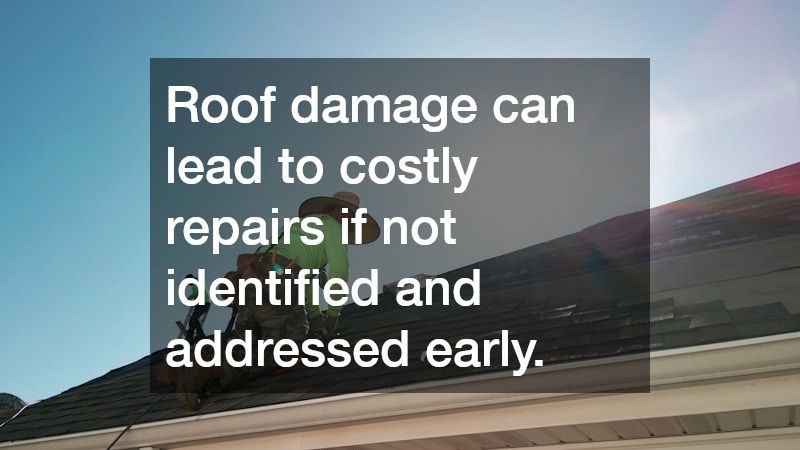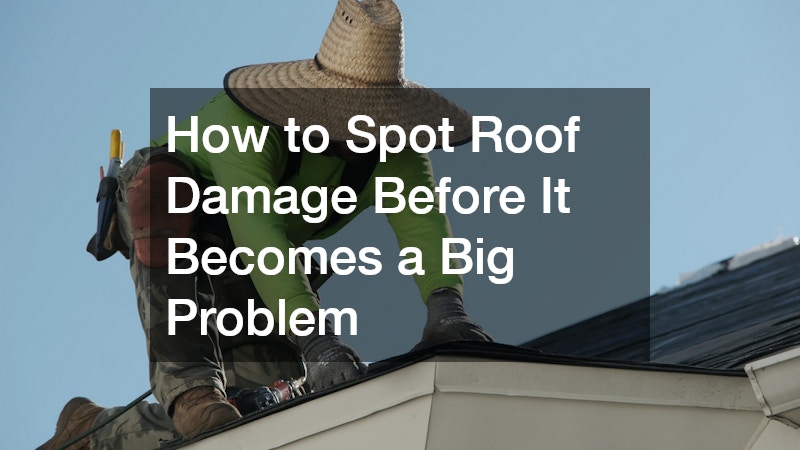How to Spot Roof Damage Before It Becomes a Big Problem
Roof damage can lead to costly repairs if not identified and addressed early. This article will guide you through the steps to spot roof damage before it escalates into a major issue.
What Are the Early Signs of Roof Damage?
Inspecting Shingles and Flashing
One of the most noticeable signs of roof damage is problems with your shingles and flashing. Curling, cracked, or missing shingles can severely compromise your roof’s ability to protect your home from the elements.
Flashing, which is used around chimneys, vents, and other protrusions, is another critical component to inspect. If you notice it is loose or corroded, it could lead to leaks.
Regular inspections by a professional roofer of these components can help you catch problems early, preventing costly repairs. Often, the first visible sign of roof damage starts here.
Checking for Water Stains and Leaks
Water stains on ceilings and walls are clear indicators of a possible leak in your roof. These stains often appear as discolored patches and can lead to mold growth if not addressed.
Another telltale sign of a roof leak is drips or moisture in the attic. Inspecting your attic regularly, especially after heavy rain, can help identify problem areas.
Immediate attention to water stains and leaks can prevent further damage to your home’s structure. It’s essential to determine the source of the leak promptly to minimize repair costs.
How Can I Perform a Roof Inspection Safely?
Safety Tips for Roof Inspections
Safety is paramount when inspecting your roof. Always use a sturdy ladder and have someone else present while you’re examining your roof.
Wear appropriate footwear with good grip, and avoid working on the roof during wet or windy conditions. These basic precautions can significantly reduce the risk of accidents.
Having the right tools, such as binoculars for visual inspection from the ground, can provide insights without needless risk. Safety should always be the top priority during a roof inspection.
When to Call a Professional
Knowing when to call a professional is crucial to maintaining your roof’s integrity. If you notice extensive damage or are unsure about your findings, it’s best to seek expert assistance.
Professionals are trained to spot nuances that may elude the untrained eye and have the equipment to address issues safely. Calling in the experts can sometimes be more economical in the long run.
Routine expert inspections, especially after severe weather events, can provide peace of mind. A professional eye ensures that small problems don’t escalate into large, costly ones.
What Are Common Causes of Roof Damage?
Weather-Related Factors
Weather is one of the most common culprits of roof damage. Hail can dent shingles, while heavy rain increases the risk of leaks and water damage.
Wind can lift shingles, exposing the underlayment, which significantly compromises the roof’s integrity. Regular checks after storms can help spot these issues.
Cycles of freezing and thawing can also exacerbate existing problems. Weather patterns play a pivotal role in roofing wear and tear.
Poor Maintenance Practices
Neglecting regular roof maintenance can result in significant problems that could have been avoided. Simple actions like clearing debris and cleaning gutters can make a substantial difference.
Ignoring minor issues like small leaks or displaced shingles invites costly repairs down the line. Maintenance should be an integral part of home upkeep.
Establishing a routine schedule for checking your roof can prolong its lifespan. Preventive maintenance addresses problems before they become more severe.
Conclusion
Regular inspections and understanding the early signs of roof damage are key to preventing costly repairs. By being vigilant and proactive, you can extend the life of your roof and ensure your home remains protected.





